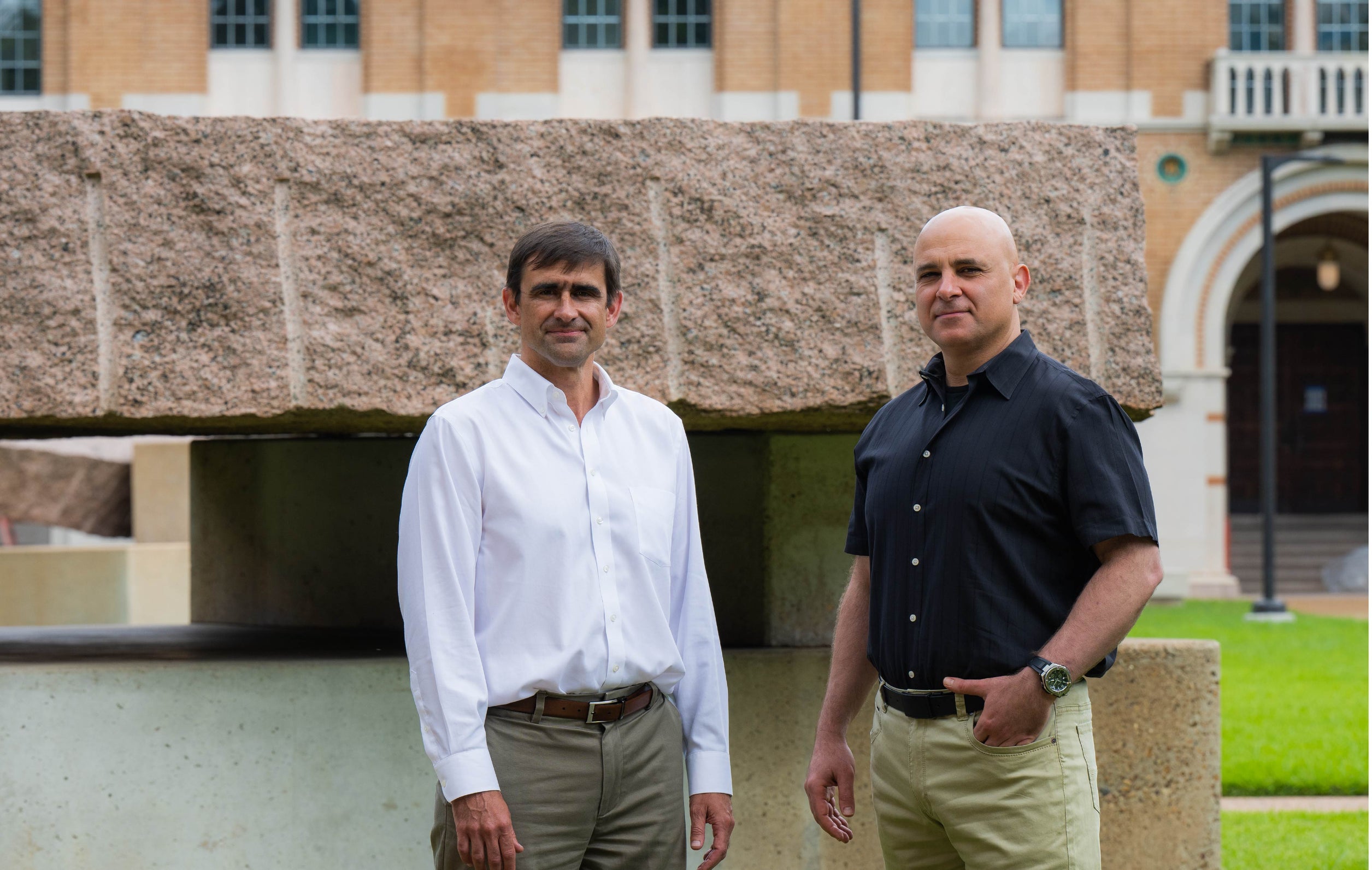
Luay Nakhleh, the William and Stephanie Sick Dean of the George R. Brown School of Engineering, and Thomas Killian, Dean of the Wiess School of Natural Sciences, have more than a few things in common. They both were celebrated, longtime Rice faculty members (16 and 19 years respectively) when they began their tenure as deans in January 2021. They both are devoted fathers to middle- and high-school-age children. And they both consider their family and their work to be their primary “hobbies.”
“Really, my work is a hobby,” Nakhleh explains. “I have fun thinking about what I want to teach, how I want to teach and what research problems I want to work on.”
They also share a common vision — to leverage their schools’ long history of collaboration and the promise of a transformative Engineering and Science Building to generate interdisciplinary innovations.
“We have many faculty members who are affiliated with departments in both schools,” Nakhleh explained. “We are one of the smallest R1 research institutions, which makes it very easy for faculty to meet each other. There are also programs, like the Institute of Biosciences and Bioengineering and the Ken Kennedy Institute, that bring together faculty from both schools and encourage innovation.”
Killian credits Rice’s reputation for interdisciplinary cooperation to a general collegial atmosphere on campus, which encourages the development of new programs and diverse teams. “Compelling intellectual problems are not constrained by traditional disciplinary boundaries, and neither are Rice faculty. You see this in the interdisciplinary applied physics and systems, synthetic, and physical biology programs.”
The deans point to the new Engineering and Science Building as the central hub for this type of interdisciplinary collaboration, exemplified by The Welch Institute's for Advanced Materials, which will be housed in the building. The Welch Institute’s chemists, materials scientists and chemical engineers are already working on novel energy applications from next-generation batteries to carbon-capture strategies. “There has never been an effort at this scale uniting so much talent, strategy and collaborative energy to create the world’s most advanced materials,” Killian said. “And Rice is at the center of it.”
